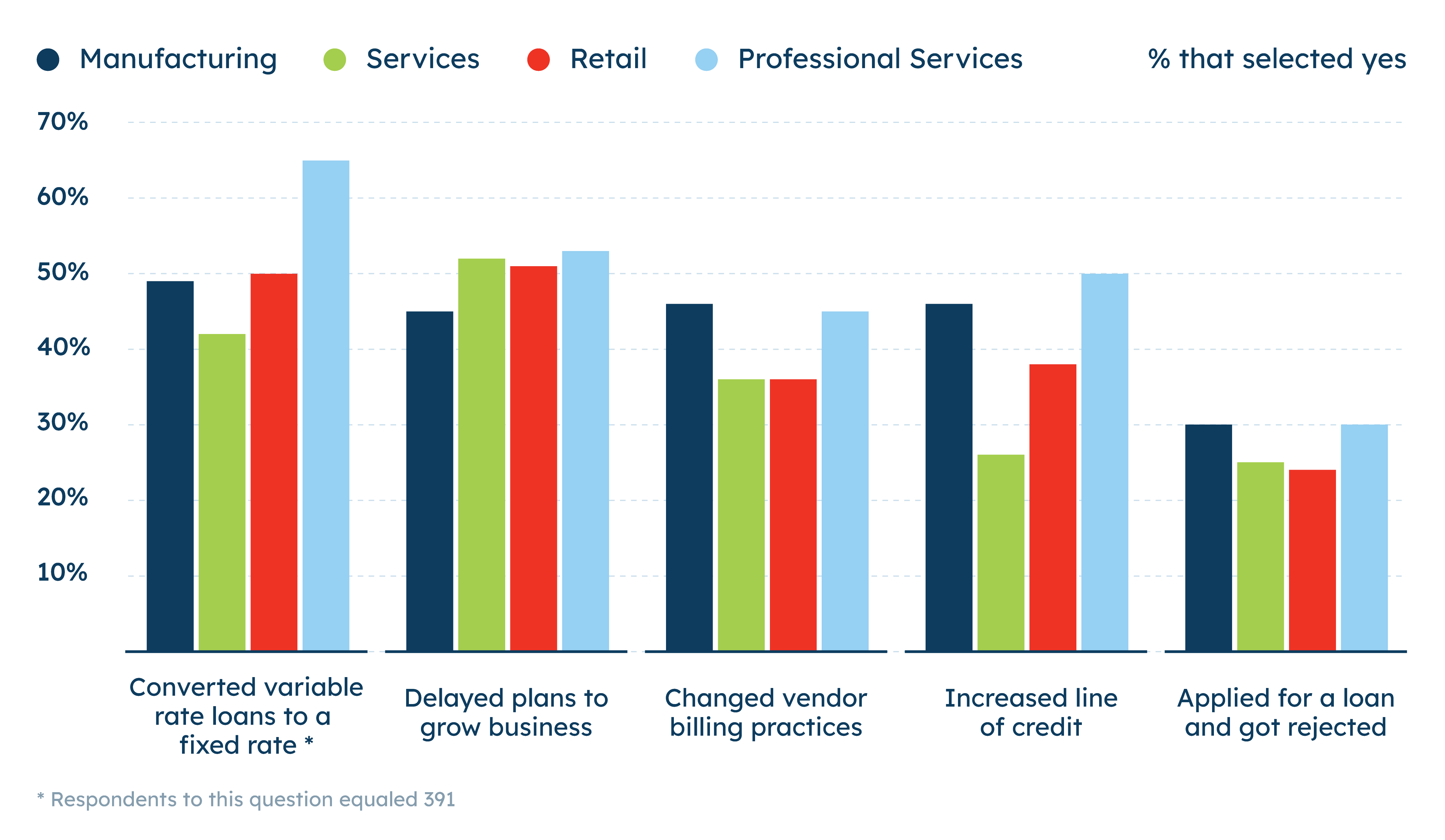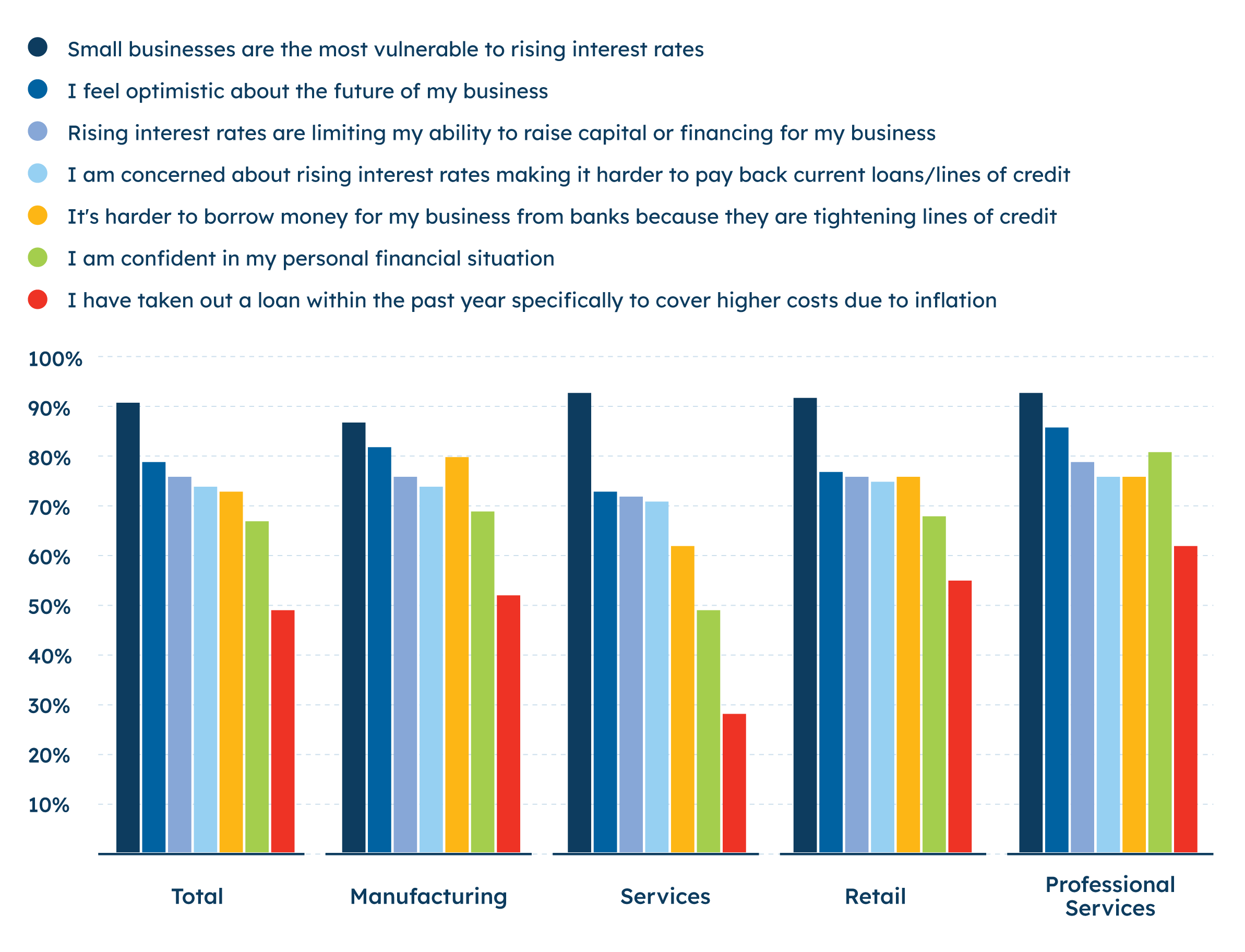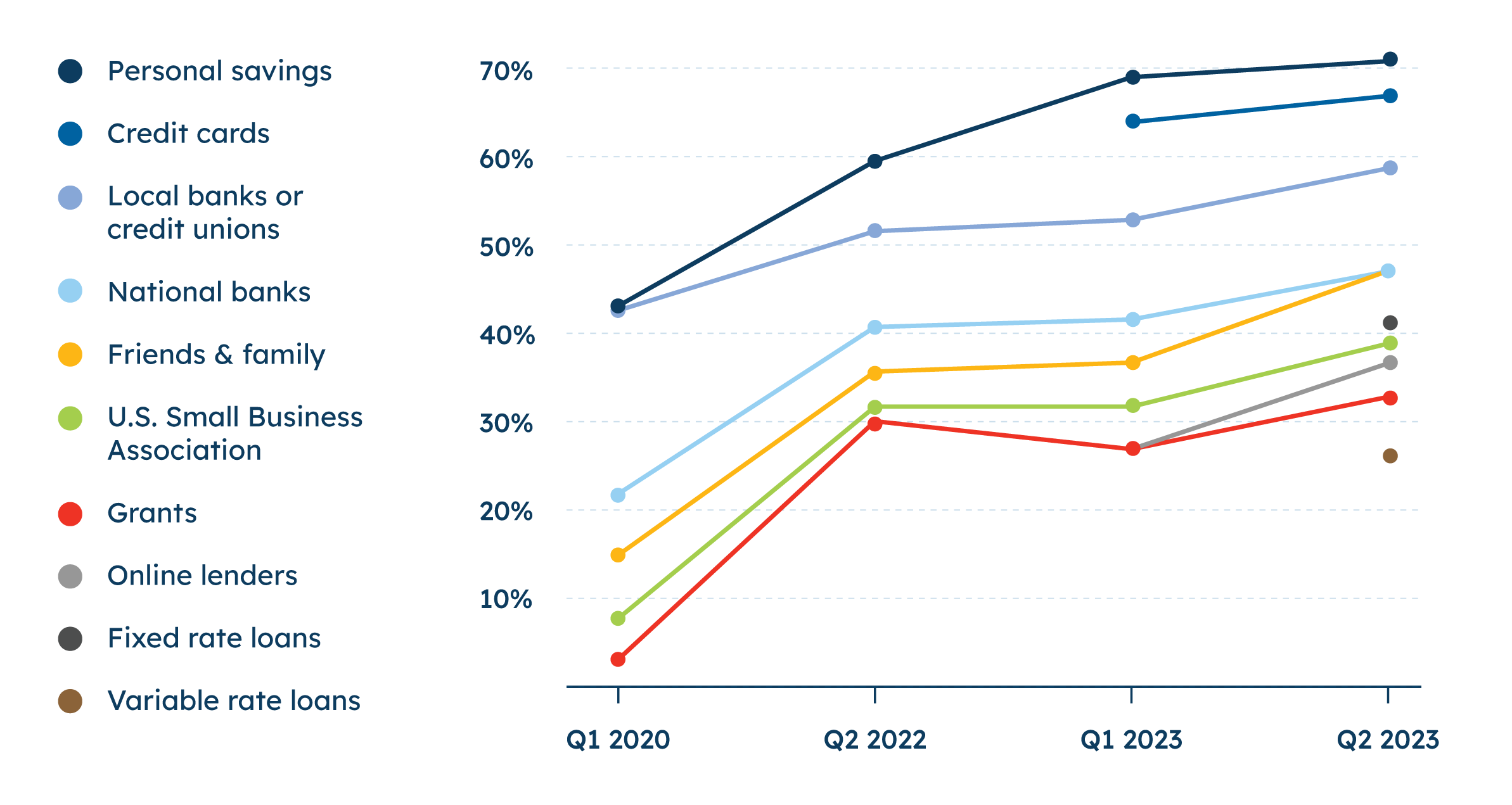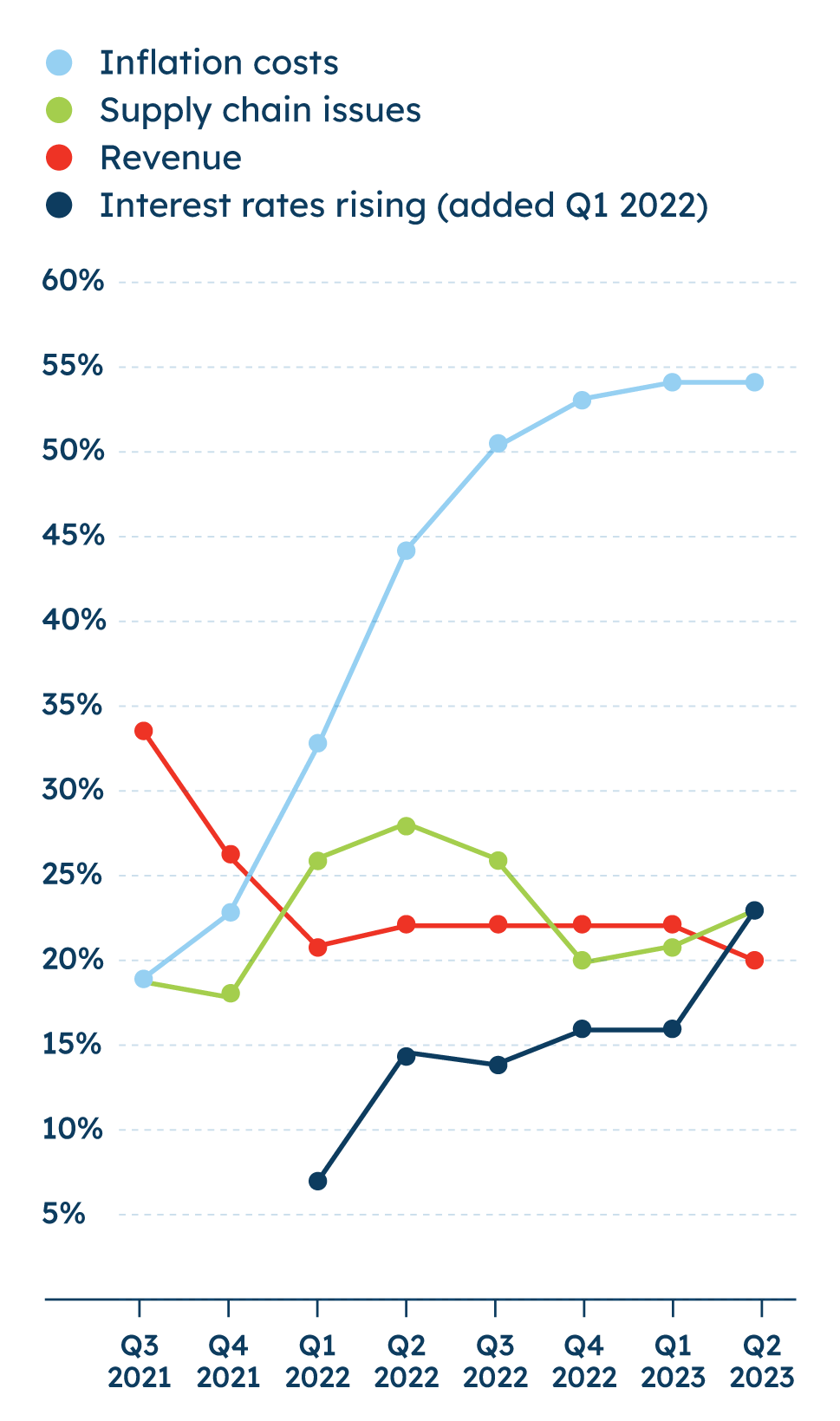Small Businesses Adjust to Higher Interest Rates, Tighter Credit

Half have delayed plans to grow due to higher interest rates
Half (50%) of small businesses report that they have delayed plans to grow their business due to rising interest rates. Of the 26% that had used a variable rate loan, 53% have converted it into a fixed rate loan. Finally, roughly four in 10 report changing billing practices to front-load costs (40%) and increasing their line of credit (39%).
Small businesses are also adapting to higher inflation. Almost half (49%) of small businesses indicate that they have taken out a loan within the past year to cover higher costs due to inflation. This is similar to this time last year (46%), but higher than in Q3 2022 (40%).
Small businesses in services are less likely to say they have taken out a loan due to inflation or to report increasing their line of credit than other sectors.

Majority say rising interest rates are limiting ability to raise capital
Most small business owners report feeling the effects of interest rate hikes on financing their business this quarter.
In fact, a strong majority (76%) of small businesses say that rising interest rates are limiting their ability to raise capital or finance their business, a 10-percentage point increase since last quarter and a 16-percentage point increase year over year (Q2 2022). Similarly, 73% of small businesses say it’s harder to borrow money for their business from banks because they are tightening lines of credit. Likewise, 74% express concern about rising interest rates making it harder to pay back current business loans.
While rising rates certainly have implications for the broader economy, fully nine in ten (91%) small business owners agree that small businesses are the most vulnerable to rising interest rates (including 52% that strongly feel this way).
Despite professional services being the most likely sector to cite rising interest rates as a top concern, businesses from all sectors express similar levels of worry over interest rates’ impact on their access to capital and ability to pay back current loans.

Liberty Landscape Supply, Jacksonville, FL
Small Businesses Cast Wider Net to Secure Financing as Rates Rise
In the face of higher interest rates, small businesses are turning to a diverse range of sources to finance and grow their businesses.
Compared to a year ago, small businesses report turning to a wide array of funding sources at even higher levels. A majority still report relying on their personal savings (71%) and credit cards (67%) as the top sources for funding their small businesses. A lesser amount—but still a majority (59%) of small businesses—seek funding from local banks or credit unions.
This quarter two new questions revealed that some small businesses opted for fixed rate loans (41%) or variable rate loans (26%) to fund their businesses.
Demographically, small businesses of different sizes and ownership patterns seek financing from different places. Larger small businesses are more likely to say they’ve turned to traditional sources of financing than smaller ones, while the smallest small businesses (less than five employees) have increasingly diversified their financing sources over the last quarter.

Small businesses with fewer than five employees are more likely to report turning to personal savings and online lenders than larger ones. Compared to Q1 2023, the smallest small businesses report turning to a number of sources at higher levels including: local banks or credit unions (55% vs. 46%), friends and family (51% vs. 37%), national banks (45% vs. 35%), online lenders (41% vs. 25%), and the U.S. Small Business Administration (37% vs. 27%). Meanwhile, the largest small businesses report using financing sources in similar rates as Q1 2023.
As in Q1 2023, male-owned small businesses continue to say they have turned to national banks at higher rates than women-owned small businesses (51% vs. 41%). However, while women-owned businesses reported turning to personal savings more than male-owned businesses in Q1 2023, this quarter shows both turning to their savings at similar rates (69% vs. 71%, respectively).
Small businesses owned by Generation Z, millennials, or Generation X are more likely to indicate that they have turned to nearly all the diverse sources asked about compared to those owned by baby boomers and older generations. This marks a change from last quarter, where there were more similarities between Gen X and baby boomer-owned businesses. This quarter, Gen X-owned businesses report turning to many more sources of financing compared to last quarter including local banks or credit unions (57% vs. 47%), national banks (48% vs. 37%), and friends and family (45% vs. 32%)—among other sources.

Over half say inflation remains biggest challenge
A majority (54%) of small businesses rate inflation as their largest challenge. This matches past highs from the Index and has remained consistent since Q3 2022. It also represents a 35-percentage point increase since Q3 2021. The concern over inflation is widespread: Inflation is the top concern for small businesses regardless of their region, number of employees, or sector.
Consistent with last quarter, supply chain issues (23%), rising interest rates (23%), and revenue (20%) remain second-tier concerns behind inflation. However, more small businesses (23%) indicate that rising interest rates are a top concern this quarter, after this measure plateaued at about 15% throughout 2022. Since Q3 2021, when this was first asked, concerns over rising interest rates have climbed 16 percentage points.
Similar to last quarter, professional services small businesses are more likely to cite rising interest rates as a top concern than those in other sectors (34% vs. 17-21%, respectively). Businesses in the West are also more likely than those in other regions to say interest rates are a top concern (32% vs. 18%-21%, respectively).



